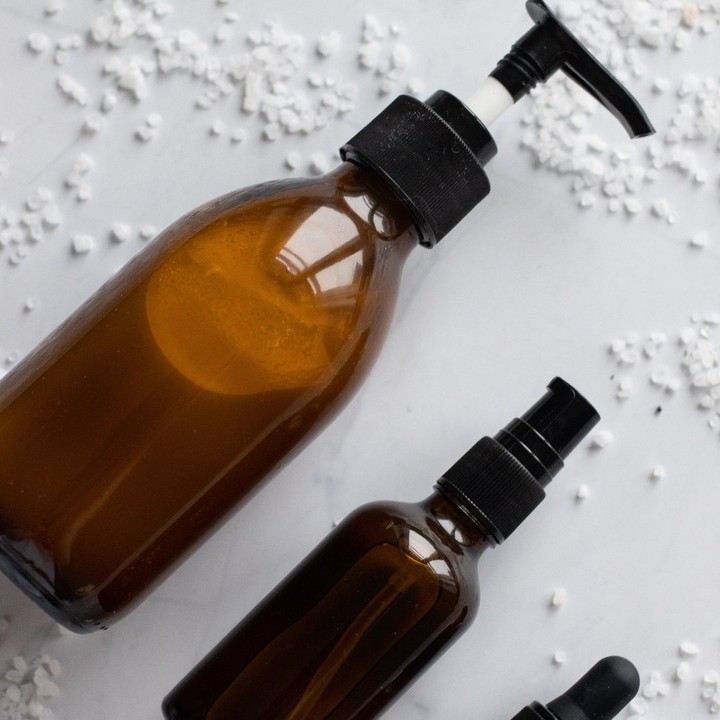
How to Achieve a Safe and Even Tan with Tanning Oil?
How to Achieve a Safe and Even Tan with Tanning Oil
Tanning has long been associated with beauty, health, and a symbol of leisurely days spent under the sun. While sun-kissed skin can provide a radiant glow, overexposure to the sun's ultraviolet (UV) rays can lead to skin damage, premature aging, and an increased risk of skin cancer. As a result, many sunbathers turn to tanning oils to accelerate the tanning process and achieve that desired golden hue. However, using tanning oil requires a thorough understanding and cautious approach to ensure both safety and an even tan. This article delves into the best practices for achieving a safe and even tan with tanning oil.
Understanding Tanning Oil
Tanning oils are formulated to attract and intensify the sun's rays, thereby speeding up the tanning process. They often contain ingredients that moisturize the skin and enhance its ability to absorb UV rays. Common components include mineral oils, coconut oil, various plant extracts, and sometimes SPF (Sun Protection Factor) elements. While tanning oils can amplify the effects of the sun, they do not provide substantial protection against harmful UV rays. Thus, it's crucial to use them responsibly.
Preparing Your Skin
Achieving an even tan starts with proper skin preparation. Before applying tanning oil:
- Exfoliate: Dead skin cells can lead to patchy and uneven tanning. Gently exfoliate your skin using a loofah or exfoliating scrub to remove dead skin and create a smooth surface.
- Hydrate: Well-moisturized skin tans more evenly. Regularly moisturize your skin in the days leading up to tanning to ensure it remains hydrated and healthy.
- Understand Your Skin Type: Different skin types react differently to the sun. Knowing your skin type (e.g., fair, medium, olive, or dark) can help determine the appropriate tanning duration and oil intensity.
Applying Tanning Oil Effectively
The application process plays a pivotal role in achieving an even tan. Here's how to apply tanning oil effectively:
- Choose the Right Oil: Select a tanning oil that suits your skin type and tanning goals. For instance, if you have sensitive skin, opt for hypoallergenic or natural tanning oils. You can choose Grahams Natural Sunclear 40 Spf Natural Sunscreen 100 g
- Apply Generously but Evenly: Pour a generous amount of tanning oil onto your palms and apply it to your skin using gentle, circular motions. Ensure even coverage to prevent patchiness.
- Avoid Sensitive Areas: Steer clear of sensitive areas like the face, ears, and nipples. These areas can easily burn, and applying oil might exacerbate the risk.
- Reapply as Needed: Tanning oils can wear off due to sweat, water, or towel drying. Reapply every couple of hours or after swimming to maintain consistent coverage.
Ensuring Safety While Tanning
While tanning oils can enhance your tanning experience, safety should always be a priority:
- Use Sunscreen: Despite the allure of tanning oils, it's essential to prioritize skin protection. Apply a broad-spectrum sunscreen with at least SPF 30 alongside your tanning oil to shield your skin from harmful UV rays. You can choose Novaclear Urban Sunblock (Spf 50+) Sensitive Skin 40ml 1+1
- Limit Sun Exposure: Prolonged sun exposure, especially during peak hours (10 a.m. to 4 p.m.), increases the risk of sunburn and skin damage. Limit your tanning sessions to 15-30 minutes initially and gradually increase as your skin acclimates.
- Stay Hydrated: Dehydration can intensify the effects of sun exposure. Drink plenty of water before, during, and after tanning to keep your skin hydrated and promote overall well-being.
- Listen to Your Skin: If you experience any discomfort, redness, or unusual reactions, cease tanning immediately. Your skin communicates its needs, and it's crucial to heed its warnings.
After-Tanning Care
After basking in the sun and achieving that coveted sun-kissed glow, the journey towards maintaining radiant skin doesn't end. In fact, post-tanning care is just as crucial, if not more so, than the actual tanning process. Proper after-tanning care not only preserves your tan but also safeguards your skin's health, ensuring it remains supple, hydrated, and protected against potential damage. Here's a closer look at the essential steps and considerations for after-tanning care.
1. Moisturize Intensely:
One of the primary after-effects of sun exposure is skin dehydration. The sun's rays can strip your skin of its natural oils, leading to dryness and potential flakiness. To counteract this, opt for a rich, hydrating moisturizer. Look for products containing ingredients like aloe vera, hyaluronic acid, shea butter, or natural oils such as coconut or jojoba. These ingredients not only replenish lost moisture but also soothe any potential sunburns, reducing redness and irritation. You can choose . You can choose Lirene Moisturizing Emulsion 30spf 150ml + 25ml
2. Cool Down and Soothe:
If you've spent an extended period under the sun, especially during peak hours, your skin might feel warm or even slightly burnt. To alleviate discomfort:
- Take cool showers or baths to lower your skin's temperature and provide instant relief.
- Consider using soothing products like after-sun lotions or gels containing menthol, cucumber extract, or chamomile. These ingredients have anti-inflammatory properties that can calm irritated skin and reduce redness. You can choose Mosquitno Sun Cream & After Sun Lotion 2 X 50ml
3. Rehydrate from Within:
Hydration is key to maintaining skin health post-tanning. While external moisturizers play a vital role, internal hydration is equally essential. Drink plenty of water and replenish electrolytes if you've been sweating excessively. Proper hydration not only aids in skin recovery but also supports overall bodily functions, ensuring you feel revitalized after a day in the sun.
4. Protect Your Tan:
To prolong your tan's lifespan and ensure it fades evenly:
- Avoid exfoliating your skin aggressively. Instead, opt for gentle exfoliants and limit exfoliation to once or twice a week.
- Wear loose-fitting clothing to prevent friction, which can cause tan patches to fade unevenly.
- Limit the use of products containing harsh chemicals or alcohol, as these can strip the skin and accelerate tan fading.
5. Avoid Further Sun Exposure:
After tanning, your skin remains sensitive and more susceptible to damage. Avoid prolonged sun exposure, especially during peak hours. If you must be outdoors, seek shade, wear protective clothing, and always apply a broad-spectrum sunscreen with a minimum SPF of 30. Reapply sunscreen every two hours, or more frequently if swimming or sweating.
6. Monitor Your Skin:
Regularly inspect your skin for any changes, unusual spots, or signs of sun damage. Early detection of potential issues like sunburns, sunspots, or irregular moles can lead to timely interventions and prevent long-term complications. If you notice any concerning changes, consult a dermatologist promptly.
Tanning with oil can provide a beautiful, sun-kissed glow, but it necessitates a combination of preparation, caution, and after-care to ensure safety and evenness. By understanding your skin, choosing the right products, applying them effectively, and prioritizing skin protection, you can enjoy the benefits of tanning while safeguarding your skin's health. Remember, moderation and mindfulness are paramount when it comes to achieving a radiant tan safely.
 العربية
العربية





